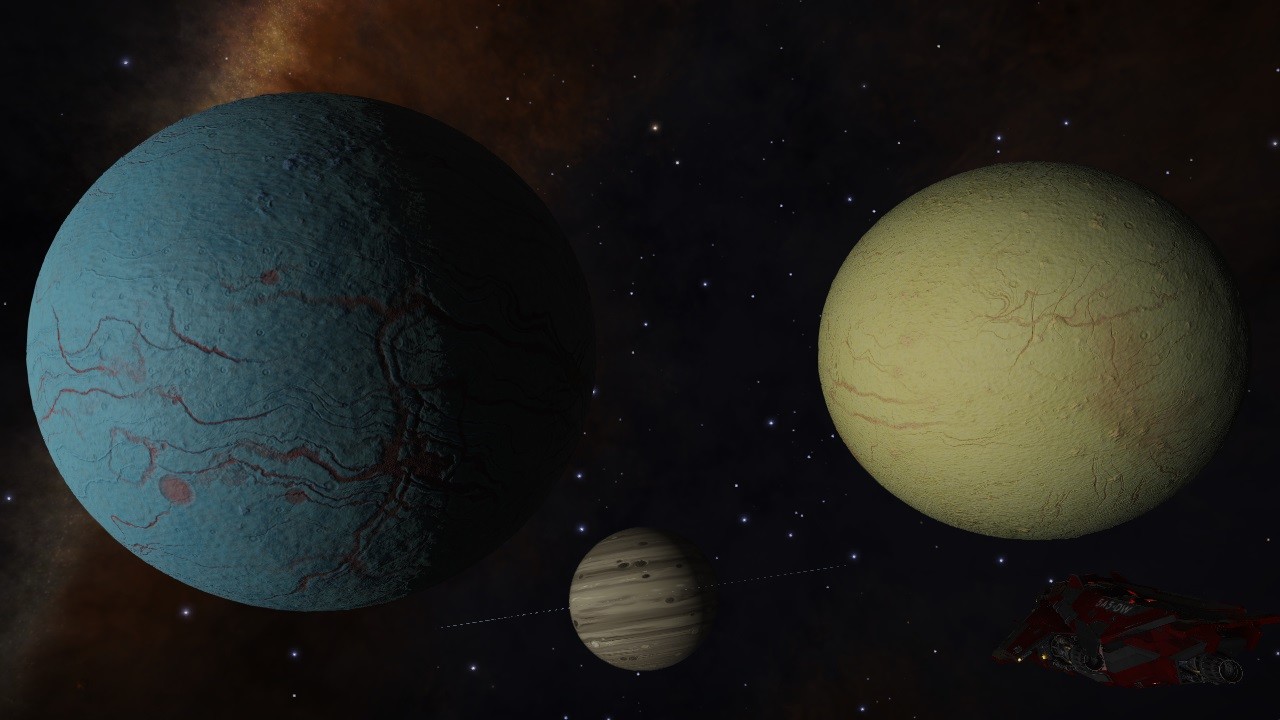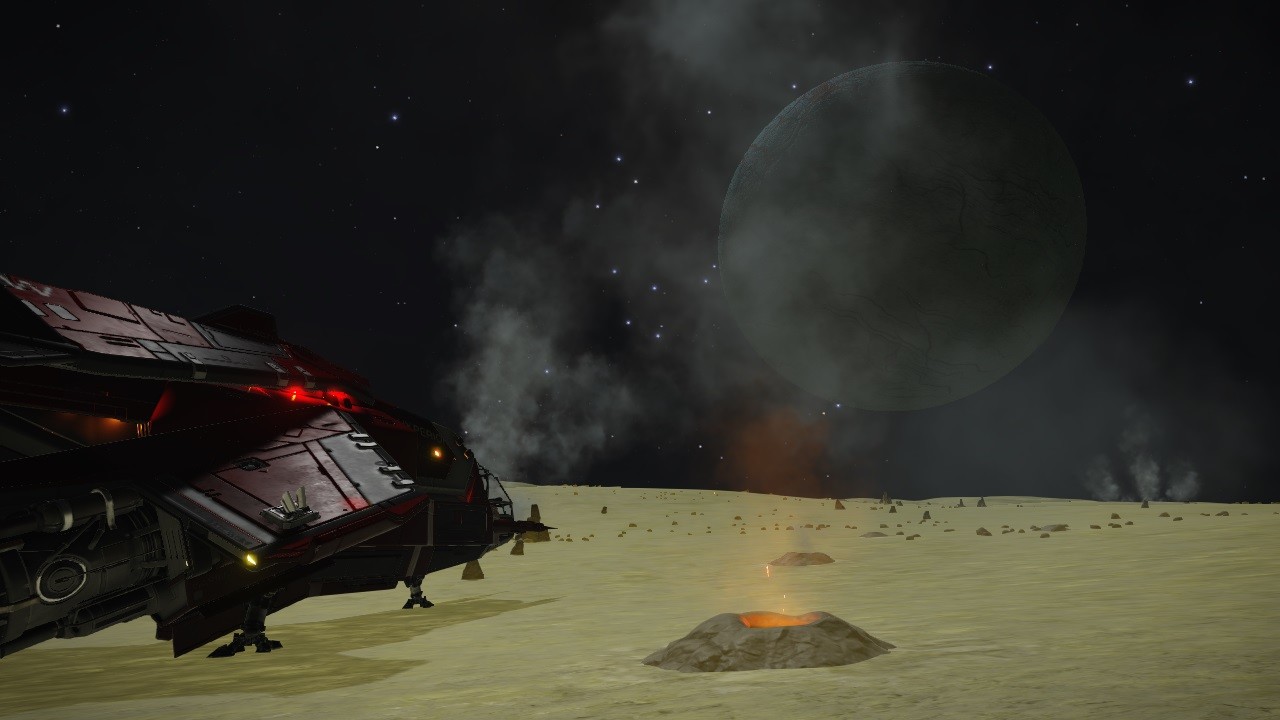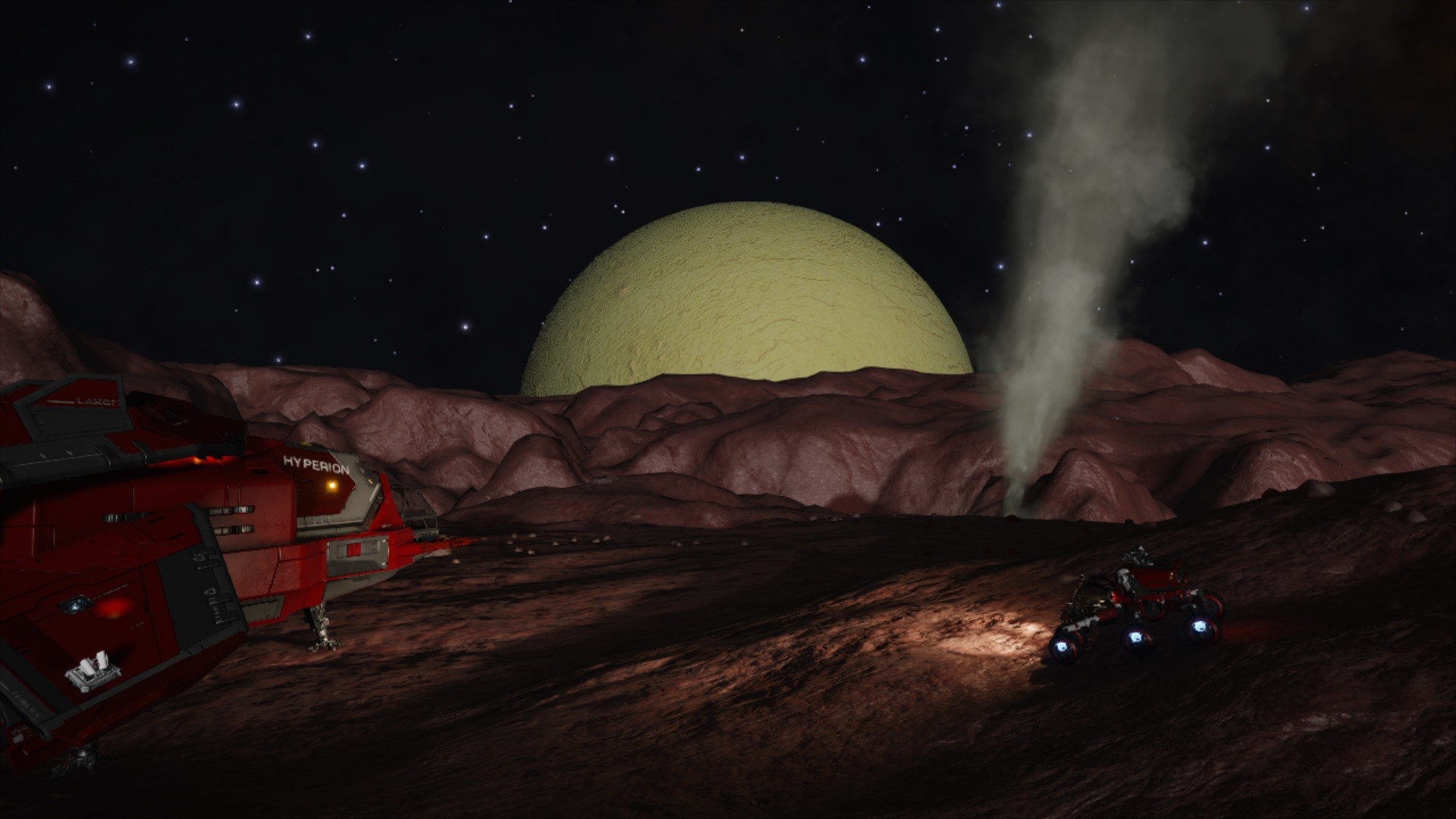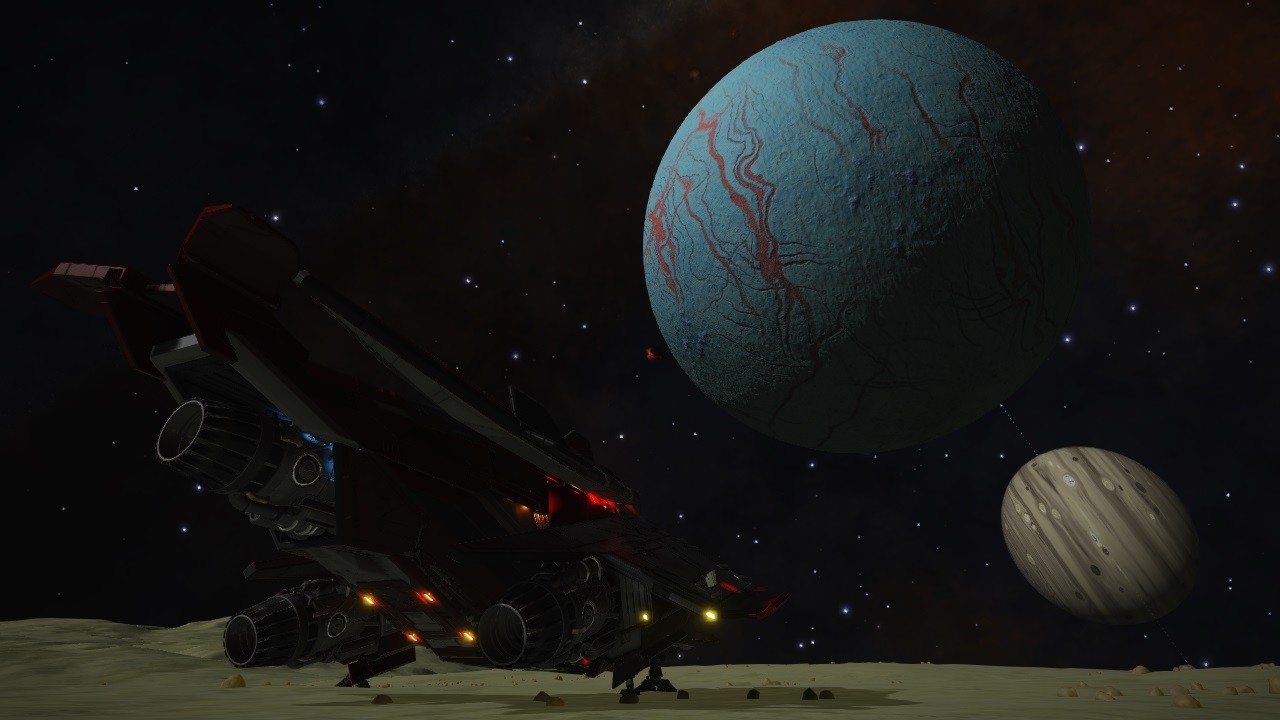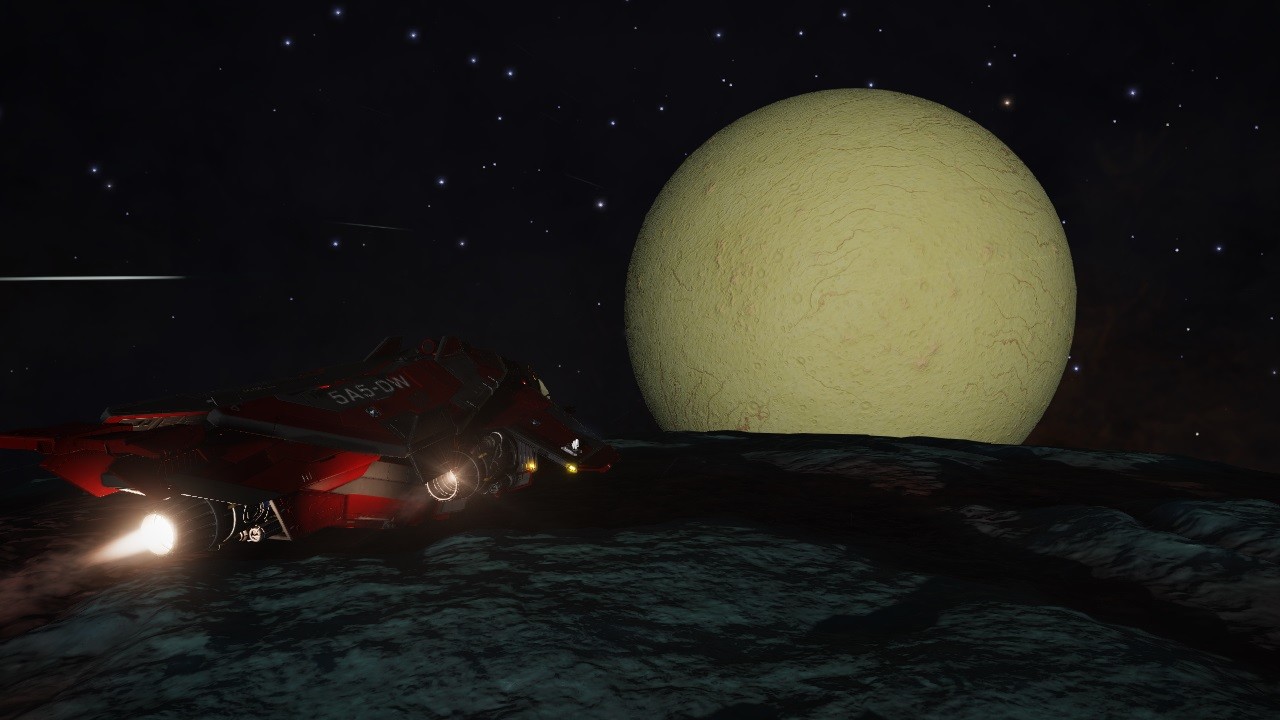POI Name: Tristan and Isolde
POI Type: Two icy moons sharing a very tight orbit
GalMap Ref:
Pyraleau YL-Z c2-5 4 a
Pyraleau YL-Z c2-5 4 b
Description: A system previosly discovered by Commander Thonya, but never explored. When I arrived, the Discovery Scanner revealed twelve stellar bodies, and the Full Spectrum System Scanner showed nothing interesting, but I decided to identify the bodies because there were not so many of them. I had localized ten of the bodies with no problems when I heard the signal source of an icy body. They had to be the last ones. But, to my surprise, the scanner was able to see them, but it could not magnify to identify them. They seemed to be moving very fast on the screen. I tried several times with no success, so I decided to pay a closer look and try a visual identification. I wanted to see what the problem was. They had to be the moons of the fourth planet, a small class I gas giant, so I headed there.
And there they were. Two astonishing beautiful icy moons, one yellow and the other blue, sharing an orbit so tight, that the scanner was unable to identify them. An approximated measure showed that they were less than 3MM one from the other.
I thought they deserved to be named. Their official names did not make justice to them. So, I started to think about couples of lovers of the ancient legends of Earth and the story of Tristan and Isolde came to my mind. A tragedy about the adulterous love between one knight, Tristan, and a princess Isolde in the twelfth century. They were from two different enemy kingdoms, thus their love was impossible. I guess their story came to my mind because Isolde was described always as the blonde, and the yellowish of Pyraleau YL-Z c2-5 4 b reminded me of that. Pyraleau YL-Z c2-5 4 a, on the contrary, is blue with beautiful red canyons, that reminded me of the reddish hair of many of the habitants of the original English kingdoms back in old Earth.
The yellow one, Isolde, is the tiniest, with just 721 Km radio and a gravity of 0.04 G. It has geological activity and many water geysers.
The blue one, Tristan, is bigger, with 1.015 km radio and a gravity of 0.06 G. It has great geological activity with major water geysers.

















